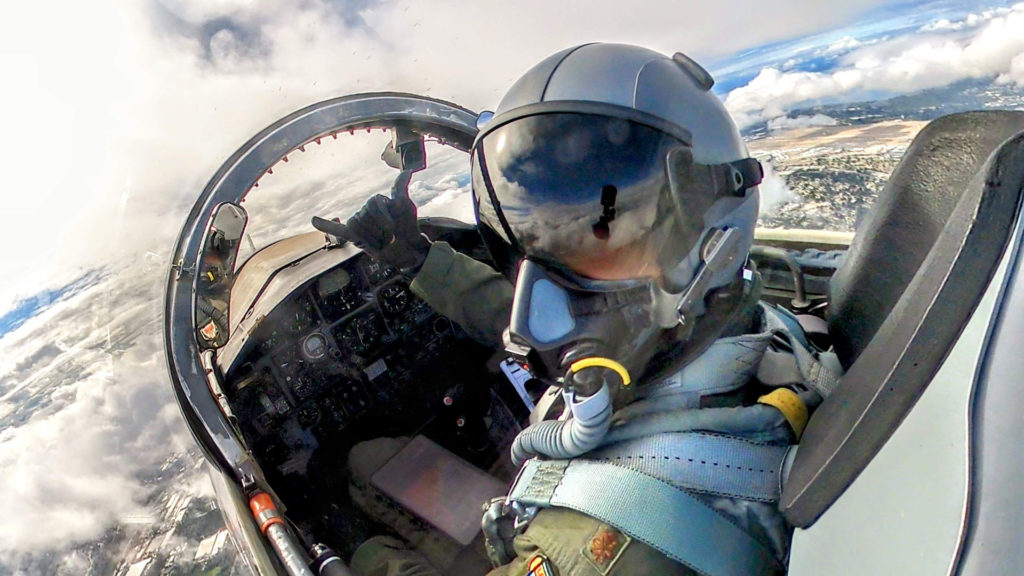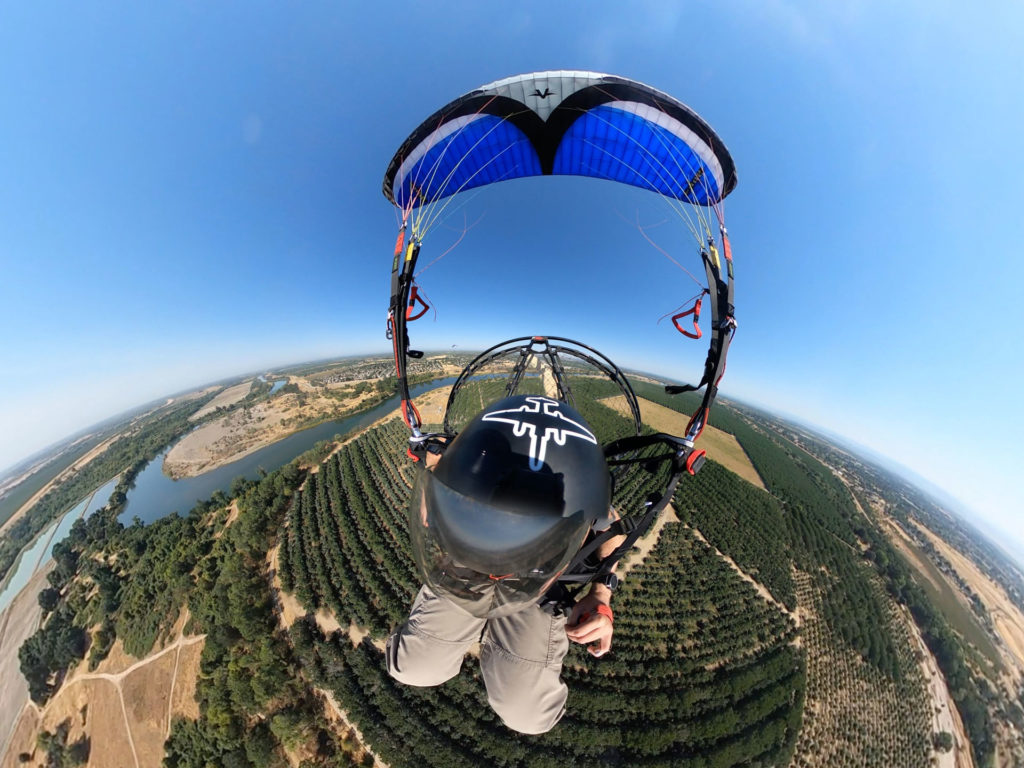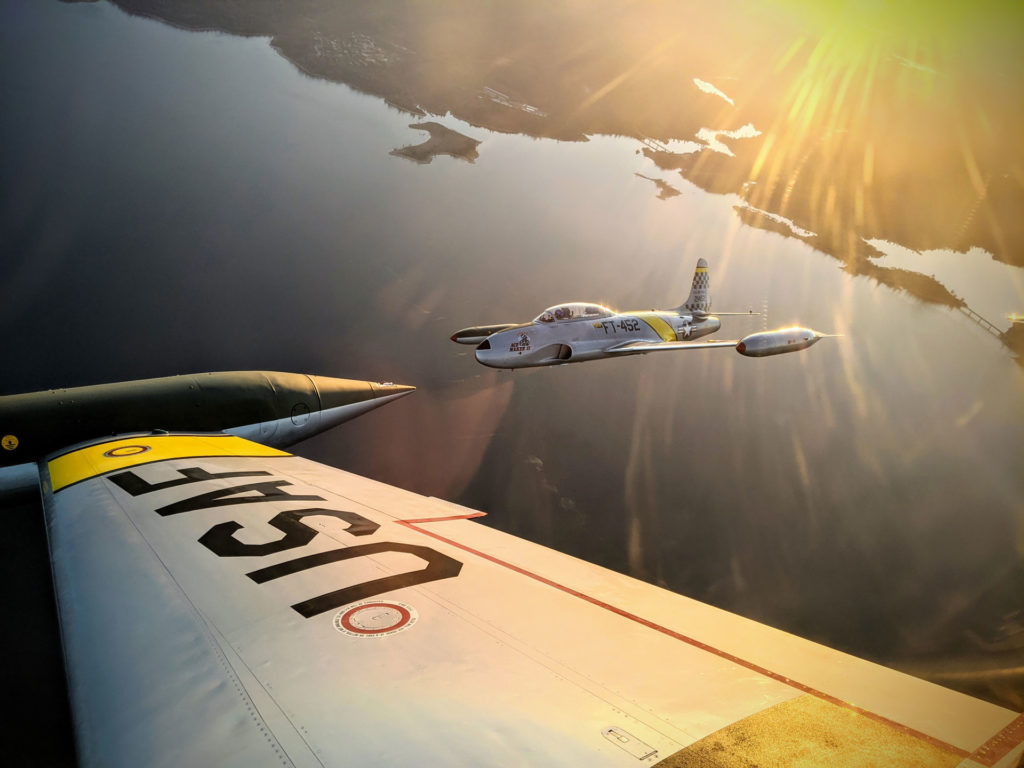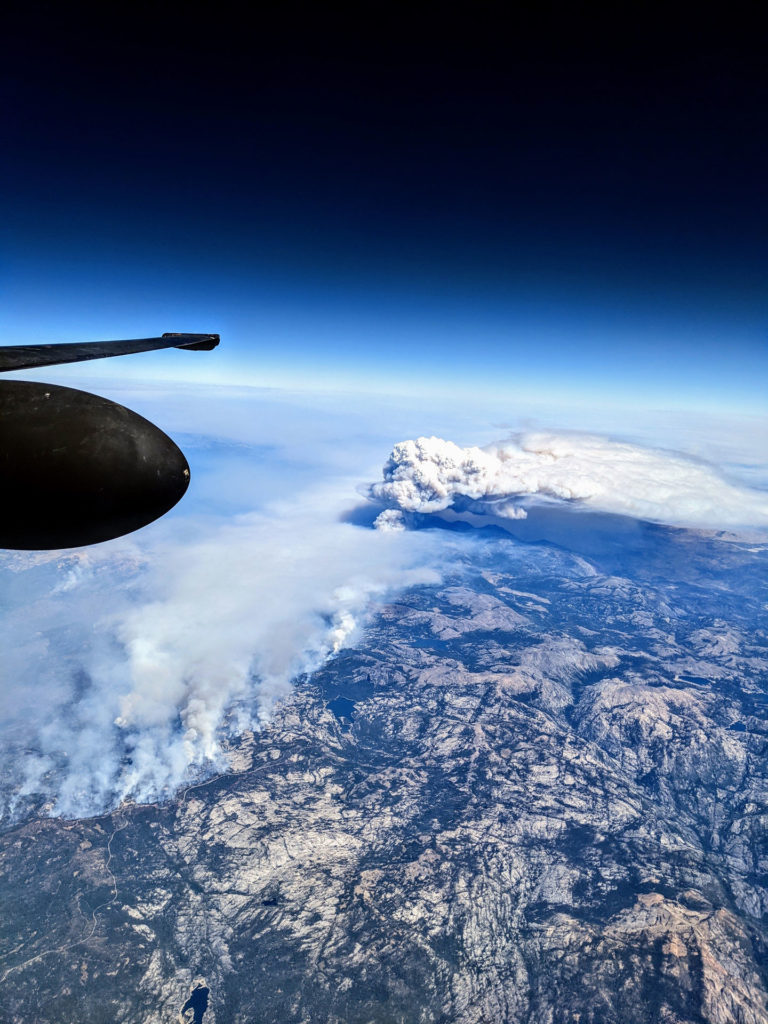Estimated reading time 16 minutes, 2 seconds.
Known by his call sign, “Nova,” Matthew Beaubien is an aerial adventurist, U-2 Dragon Lady pilot, Reno Air Race pilot, airshow formation team pilot, avid skydiver, and paramotor pilot. He is currently learning to fly helicopters, too. Nova was on the collegiate aerobatic glider team representing the U.S. Air Force Academy at the U.S. National Aerobatic Championships. He then went to pilot training, flying the T-6 Texan II and the T-1 Jayhawk. He was later selected to be an Air Commando in the Air Force Special Operations Command, flying short takeoff and landing aircraft. After over 1,000 hours of Spec Ops flying, he moved to a temporary assignment flying the MC-12 Liberty. It was there that he applied and was accepted into the U-2 Dragon Lady program. Nova is also a very active general aviation pilot and holds ATP/CFI/MEII ratings.
Skies invited its Instagram followers to submit any questions they had for Nova. See his answers below!
Skies: How did you get into aviation, and, specifically, become a U-2 pilot?
Matthew Beaubien: I have been fascinated with aviation since I was a child, I guess I never grew out of it. I was intrigued by anything that could fly, and the pursuit of that has always driven me. I was incredibly fortunate that my grandparents had a small airplane, and I was able to watch my dad get his pilot’s license. When I was old enough, I followed in the same footsteps. I knew I wanted to find a way to do this as a career. I had dreamed of joining the Air Force to fly jets, so I applied and got accepted to the U.S. Air Force Academy. One of my classes was skydiving, and I was able to compete on a collegiate glider aerobatic team! That was really my first introduction to some of the legends in the airshow world who continue to inspire me.
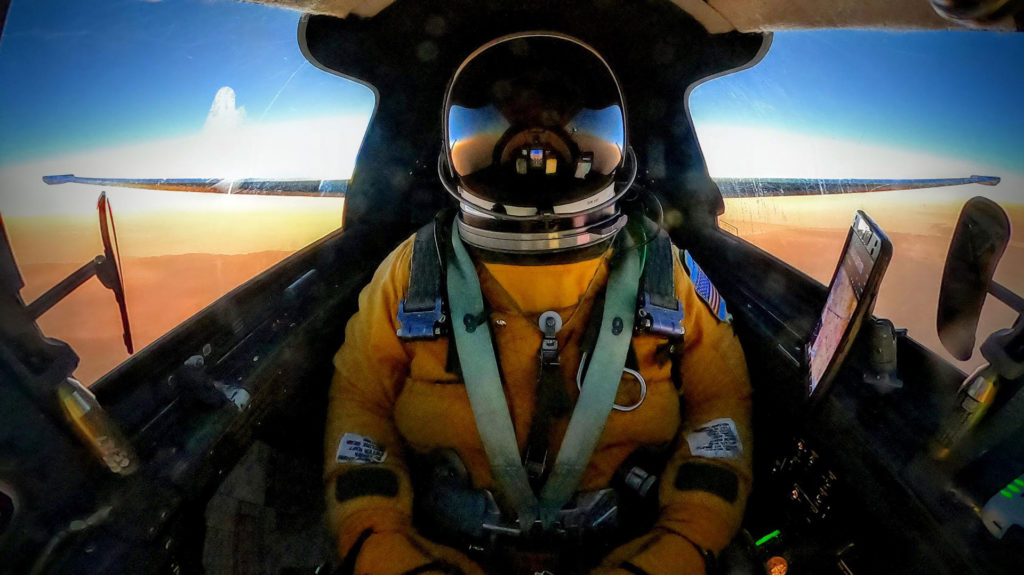
After graduating pilot training, I was selected into Air Force Special Operations Command. That was an incredible experience, but that’s a story for another time. I had always thought the dream of flying something like the U-2 was out of reach, but I finally put in an application when I met the requirements. I was fortunate enough to be selected to attend the two-week-long interview, and was ultimately hired. I never would have imagined that! It’s so cool how many opportunities are out there if you just go for it.
Skies: What is the story behind your call sign?
M.B.: Great question! Amongst the military jet communities, the naming ceremony is a rite of passage. This happens with a very exclusive group of your peers who have witnessed all of your shenanigans, your personality, your heroic deeds, and your embarrassing failures. During this ceremony, the call sign is chosen. The story behind it may never be known to the outside world. Well… most guys will tell you if you just buy them a drink at the bar. Short answer is, my call sign is Nova, and we can chat about it over a beer sometime!
Skies: What is the highest altitude you’ve reached in the U-2? (Describe that experience.)
M.B.: The U-2 flies ABOVE 70,000 feet… That’s all I can say about that! It is absolutely one of the most incredible experiences. It never gets old, and I cannot believe how amazing and stunning it is every time. This is something I wish I could describe, or bring everyone in the world with me to see. Seeing how small and fragile things are, it makes a lot of big problems seem trivial.
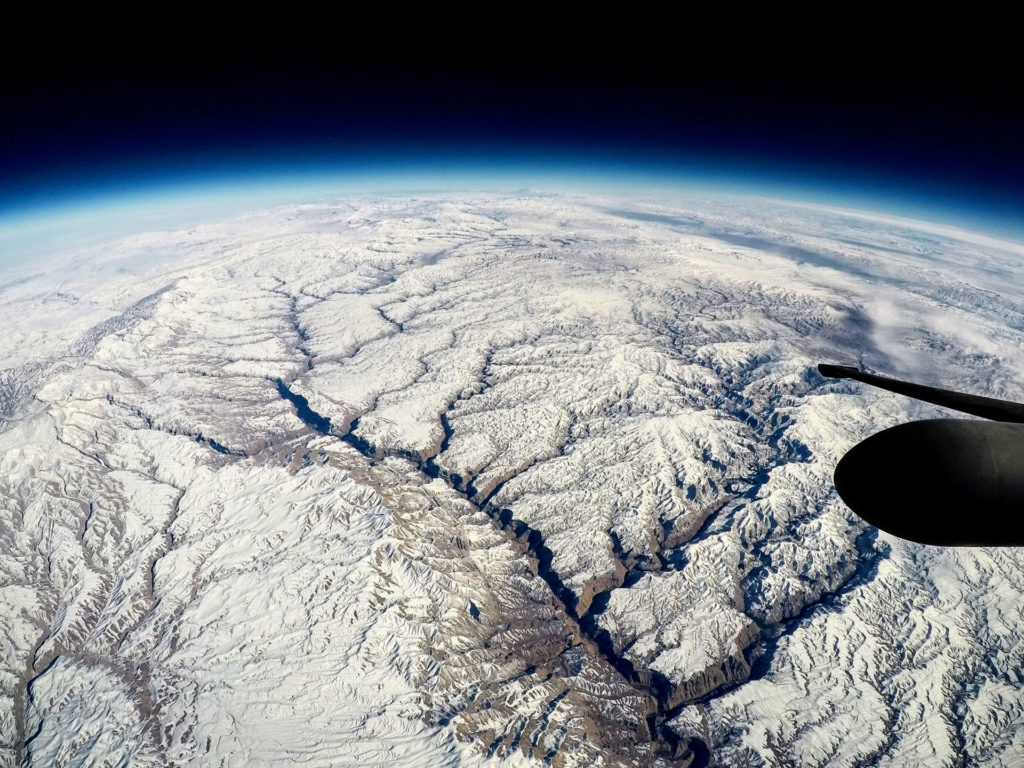
I honestly think about this question a lot when I am looking out from the edge of the atmosphere… How can I share this? I was flying one day — the same direction as the sun — so I was able to watch the sunset for hours, in total awe. I actually wrote a poem while I was wishing there was a way to share such an amazing experience:
How do you capture a moment?
How do I explain it to you?
A picture is fine, but what’s in my mind
Can never be photographed true.
So how do I convey a moment?
What are the words that I say?
I can tell you a tale, again I will fail
To detail it in the same way.
The sights that I’m seeing
The visceral feelings
The excitement, the fear
The sounds that I hear
The smell and the taste
The calmness, the haste
The joy and the sadness it brings.
So, how do I relive the moment?
Or will my memory fade away?
On this day and this time
It’s burned in my mind
Yet, this moment is not here to stay.
So, how do you capture a moment?
Simply live in that moment today.
Skies: What was your first landing in the U-2 like?
M.B.: Ha! Well, if you search on YouTube for “U-2 bad landings,” I’m sure it wasn’t too far off from that. This jet has a lot of unique characteristics. It doesn’t necessarily land like a glider, a tailwheel aircraft, a fighter jet, or really anything else. It’s unique, and takes a great cadre of instructors to teach these aircraft mannerisms to the new pilots. My hat is off to every pilot who has ever flown the U-2, and had to battle the Dragon to dance with the Lady!
Skies: What is the communication like between the pilot and the chase car on landing?
M.B.: When the jet comes back for a landing, the mobile officer will provide assistance to the pilot. But the mobile officer does a lot more than assist with landings from the chase car. They are the backup pilot for the mission, familiar with all of the mission information.
When the pilot is being integrated into the pressure suit, the mobile officer prepares the jet. Since the aircraft is a challenge to taxi — with 105-ft wingspan and a tailwheel that moves only six degrees (meaning the outside wing has a 189-ft turn radius!) — the mobile officer makes sure the aircraft stays clear to assist with the pilot’s limited visibility of being in the pressure suit. After the jet has safely taken off, the mobile officer is there on the other end of a radio to help out with anything the pilot needs, no matter how far away they are.

Most missions are between eight to 12 hours, and the pilot is returning to an extremely athletic event (the landing). The massive control surfaces in the thick air are linked directly to the pilot through control cable and pulley, without hydraulic or electric assistance. The pilot then must stall the airplane inches above the ground on the one main landing gear wheel. The mobile officer talks the pilot down to let them know how high the main landing gear is above the ground, and communicates the energy state of the airplane, as well as if there is any rudder correction needed. Even though all U-2 pilots are highly experienced aviators, we all take coaching every time to bring the Dragon Lady back to a safe landing.
Skies: What is one of your most memorable missions in the U-2?
M.B.: This is an incredibly tough question for me, because it brings a flood of memorable missions to mind. Flying all night and finally seeing the sunrise over the curvature of the Earth, and in an instant, you are washed with brilliant white light while the Earth is still dark below, is one of the more incredible things I’ve seen.
Another memory that stands out happened on one of my very first missions in the U-2. The temperature and dew point met across the entire peninsula we were flying at, and it started snowing with almost no visibility anywhere. Almost all of the airliners diverted, and I was the only aircraft left in the airspace. Unfortunately, it didn’t look like I had enough gas to divert to where the weather was nice. Unlike most airplanes, you can’t land a U-2 Dragon Lady just ANYWHERE! I could start flying to the airfield that had good weather, and possibly run out of gas and land in the ocean — which would be cold. Or, I could do approaches at my home base until either the weather was good enough to land or until I ran of gas — whichever occurred first. At least if I ran out of gas at my home airfield, my buddies could come pick me up, which seemed like the warmer option. I had the airspace to myself and the controllers were incredibly helpful. Fortunately, the weather was just good enough on the first approach to make the landing.
Alas, most of the really cool mission stories may never be told to the outside world. That comes with the territory of flying the U-2 Dragon Lady, I guess!
Skies: How did you get into skydiving and paramotoring?
M.B.: When I was in high school, my dad bought a powered parachute; for my senior project, I learned to fly it. In college at the U.S. Air Force Academy, one of my courses was skydiving! We did five solo freefall jumps. After graduation, life got really busy learning how to fly in the Air Force, and flying in Special Operations provided plenty of adventure. I always wanted to get into skydiving, but really didn’t have the time or money — it’s expensive to get started.

Beaubien says skydiving is a great way to hang out with friends. Matthew Beaubien Photo 
The T-38A is the companion trainer to the U-2 for instrument and airmanship proficiency. Matthew Beaubien Photo 
Beaubien is seen paramotoring over the fields of Northern California. Matthew Beaubien Photo 
Beaubien in a three-ship of T-33s from Ace Maker Airshows with Greg “Wired” Colyer. Matthew Beaubien Photo 
The view from the U-2 of the California wildfires near Lake Tahoe. Matthew Beaubien Photo 
Beaubien in a pressure suit with the mighty U-2S Dragon Lady. Matthew Beaubien Photo
I’ve learned that you can accomplish pretty much anything in this world, but taking that first step is the hardest. One night, I was out with a bunch of friends, and we all decided that the next morning we were going to head to the drop zone and get started on our licenses. I haven’t looked back since! I have had so many incredible experiences and met so many amazing people!
Like many of my favorite activities, the first step is studying and learning how the equipment works safely, and then it’s easier to trust the equipment. Fear, I think, is almost purely based on the unknown.
Paramotoring is just another expression of flight, and another incredible way to experience it. I’m still pretty new to it, and I’m excited for the adventures it will take me on and the people I will meet!
Skies: Is there a certain plane/aircraft on your bucket list to skydive from?
M.B.: All of them! I really enjoy unique experiences. Once you are out the door of the aircraft, it’s pretty much all the same once you reach terminal velocity. Everything before that is unique, and forces you to think through the problem set of how to do it safely. I really enjoy things that challenge me and take me outside of my comfort zone, while staying within the envelope of safety. Humans like patterns, so when something doesn’t fit the pattern, we take notice. This is why different aircraft intrigue me.
The moments when your heart rate speeds up, you get a few butterflies and maybe some sweaty palms… then you put mind over matter and remember your training, trust your gear, and then jump! Those are the memories I’ll have forever. So, if you have a plane, hot air balloon, helicopter, blimp, a rocket, or some helium balloons, let’s get together and send it!
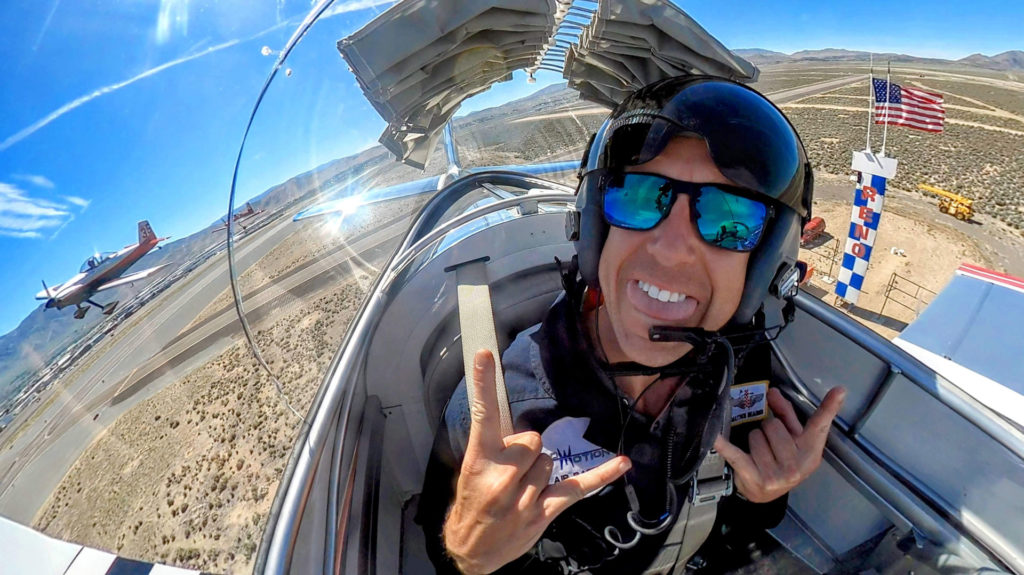
Skies: Do you have any cool adventures planned in the near future?
M.B.: I hope to do some skydiving around Europe this winter. I also just started helicopter flight training at Deer Creek Helicopters in Chico, California, which should keep me busy through the spring! I’ll try to be at the 2022 Arizona Formation Clinic, which is a Van’s RV specific formation flying clinic over Lake Havasu, at the end of February. I would also love to attend the Salton Sea Powered Paragliding Fly-In around the same time — I haven’t been to that yet! At the end of March is the Stoke Rising Boogie at SkyDance Skydiving in Davis, California, and then it rolls right into airshow season and Pylon Racing School in Reno, Nevada.
Speaking of airshows, mark your calendars! We are planning the Beale AFB “Wings Over Recce Town” Air Expo from May 20 to 21, 2023. You’ll have the chance to see the U-2 up close, as well as some very special world-class guests performing!


